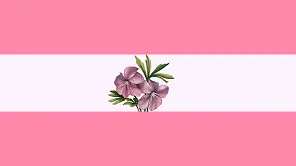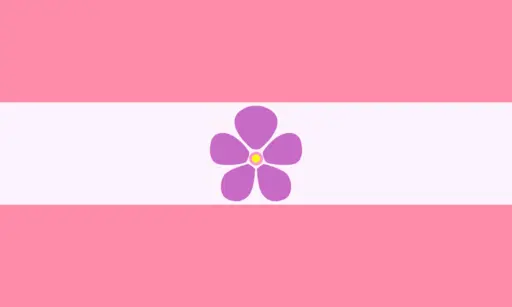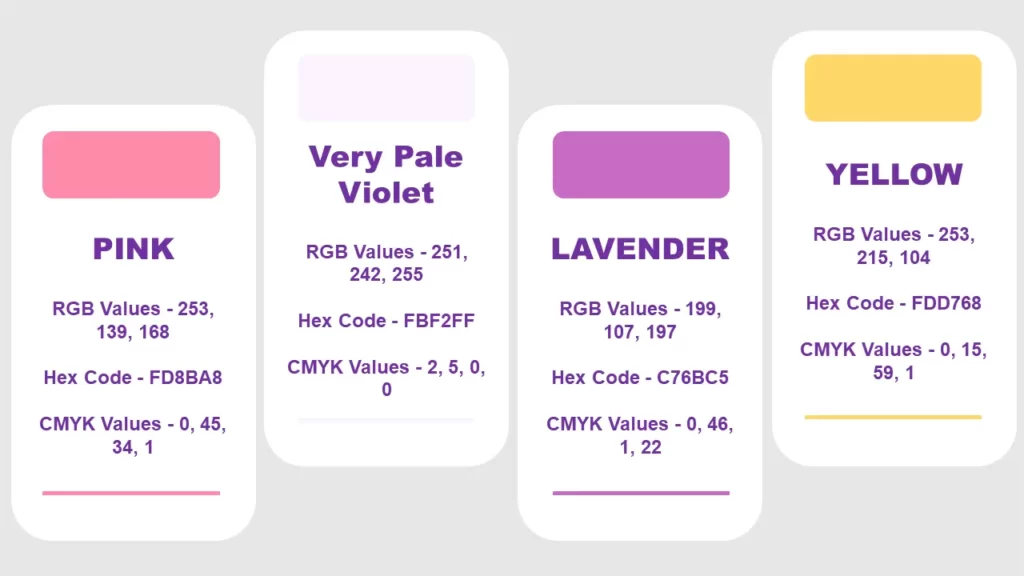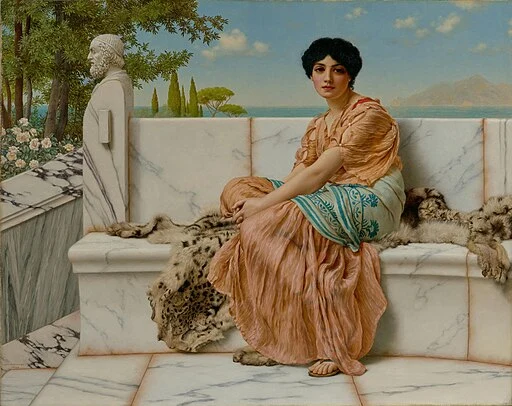The Sapphic Flag, also known as the Sapphic Pride Flag, is a symbol used by sapphics—women or women-aligned individuals attracted to other women, inclusive of non-binary individuals. It serves as a rallying point and a symbol that invokes a sense of pride in being a sapphic.
It begs the very basic question of who qualifies as a sapphic or, even, who can identify as a sapphic. The usage of the word sapphic has been evolving, and the archaic use of the term seems to be quite narrow when compared with its modern meaning.
Hold your curiosity about the sapphic flag for a moment to understand who this flag belongs to, for there is a fair degree of confusion surrounding it.
What is the Sapphic Flag or Sapphic Pride Flag?
The Sapphic Pride Flag is used by people who identify as sapphic and is meant to be a unifying symbol for the community. It is also meant for people from the sapphic community to evoke a spirit of camaraderie.
Who created the Sapphic Flag?
The online community gets credit for having designed many of the signs and symbols for the LGBTQ+ community. The Sapphic Flag is one such fine example, which was developed by the Tumblr user – ‘lesbeux-moved’ – and posted on August 14, 2015.
The flag created by lesbeux-moved was captioned ‘Sapphic / WLW / SGA Women Flag’. SGA here means Same-Gender Attraction. It should not come as a surprise that the flag was created in 2015, because 2014 is generally acknowledged to be the year in which a spike was seen in the online searches for the word sapphic.

Source: https://lesbeux-moved.tumblr.com/
The Design
The Sapphic Pride Flag is a three-striped flag in which the top and bottom stripes are pink in color and the middle stripe is a very pale violet, almost white. This original version of the flag had a pair of violets (flowers) in “lavender-ish” color on the middle stripe (Please see the image above).
The More Popular Variant of the Sapphic Flag
The original sapphic pride flag created by lesbeux-moved was considered somewhat difficult to recreate and reproduce due to the pair of violets, which were more lifelike and also contained a depiction of leaves.
This problem was solved by another Tumblr user pride-color-schemes by creating a more reproduction-friendly variant of the sapphic flag, posted on the social networking site on June 25, 2017.

The original pair of realistic violets was replaced in this new version by a simple single drawing of the violet with five petals in lavender color. There is a yellow circle in the middle of the violet, representing the stamen of the flower, which does not touch the petals. In all other respects, the two sapphic flags are identical.
Sapphic Flag Hex Codes | Specification of Colors
The colors in the Sapphic Flag, along with their specifications for the purpose of digital creation and printing, are given in the image below.

Sapphic Flag Meaning – Interpretation of the Sapphic Pride Flag
Top and Bottom Stripes – Pink Color
The pink color on the top and bottom stripes of the sapphic flag represents love. The creator of the flag also meant to represent love with the pink color, by their own admission on Tumblr. In addition to love, the pink color represents a host of emotions, such as passion and romance.
The Sapphic Pride Flag has two stripes of the same pink color, which represent two extremes of human emotions. On the one hand, it inspires emotions of kindness and nurturing, and on the other, it represents burning passion and desire.
Middle Stripe – Very Pale Violet (Almost White) Color
The pale violet color of the middle stripe, which almost feels like white, represents pure love. This color is also associated with peace and wisdom. The creator of the original sapphic flag, lesbeux-moved, had meant the middle stripe to be white, however the color actually used was the pale violet color that felt almost like white.
Interestingly, reacting to the displeasure of a Tumblr user about using white to represent purity, which according to the user had racist undertones, the creator lesbeux-moved wrote:
“…I was an ignorant teenager when i made this post initially and didnt think too much about the racist connotations of this, but after it was pointed out to me i revised it”...
https://lesbeux-moved.tumblr.com
Sapphic Flag Flower
The original 2015 version of the flag had a pair of real-looking violets, one slightly to the left and the other facing down slightly to the right. It gives the impression of one flower blushing in the company of another. The flowers are flanked from the top and bottom by leaves. The violets were given a “lavender-ish” color, in the words of the designer.
The reason for using violets was primarily because the flower had been used historically by women to woo other women and therefore was considered apt for representing sapphic attraction and desire.
As for the 2017 version of the sapphic pride flag, a lavender-colored violet with five petals has been used. The lavender color of the flower is associated with delicacy and gentleness. The color also conveys grace and elegance.
Why Violet?
There are multiple references to the flower and its color in the works of Sappho herself. In the early 20th century, violets came to be associated with homosexuality. The 1926 French play La Prisonnière dealt with the subject of lesbianism which was quite radical for the time. In order to show their support for the subject and the crew, lesbian women in the audience pinned violets to their lapels. The play was later brought to Broadway as The Captive.
The association of violets with homosexuality and queerness, sadly, had a devastating impact on the sales of the flower. The media attention that followed the play’s lesbian subject and its association with violets reportedly cost the violet market dearly. It is very similar to the decline of Bud Light beer in the United States due to a social media campaign by trans artist Dylan Mulvaney featuring a custom-made can of Bud Light containing Mulvaney’s image. Read about the new best-selling beer in the US, i.e., Modelo and its association with Pride and LGBTQ+.
The appearance of the violet on the Sapphic Pride Flag is a deserving tribute to a flower that has inspired love and passion for millennia.
Origin of the Word Sapphic
The word Sapphic is of Greek origin and is said to have been derived from the name of a great Greek poet, Sappho, who lived in the 7th and 6th centuries BC.

Source: John William Godward, CC0, via Wikimedia Commons
It has been speculated and argued, though inconclusively, that Sappho was attracted to other women. There is an allusion to the same in her poetry, which uses a four-line verse form known as the Sapphic stanza, which was invented by Sappho.
Interestingly, the word lesbian also has a direct link to the ancient poet Sappho. Lesbian is derived from the word lesbos which was the name of the island that Sappho came from.
What does Sapphic mean?
The meaning of “sapphic” has evolved to mean ‘a woman or a woman-aligned person of any sexual or romantic orientation, attracted to other women or women-aligned persons’. This is more commonly known as women-loving-women (WLW).
Over the past few decades, the pragmatics of the word sapphic have started taking a more encompassing and inclusive direction. In other words, the intended and inferred meanings of sapphic have changed from the conventional meaning to a broader term inclusive of non-binary people and serve as an umbrella term for several identities, such as lesbian, bisexual, pansexual and queer.
Learn about two other very interesting Pride Flags.